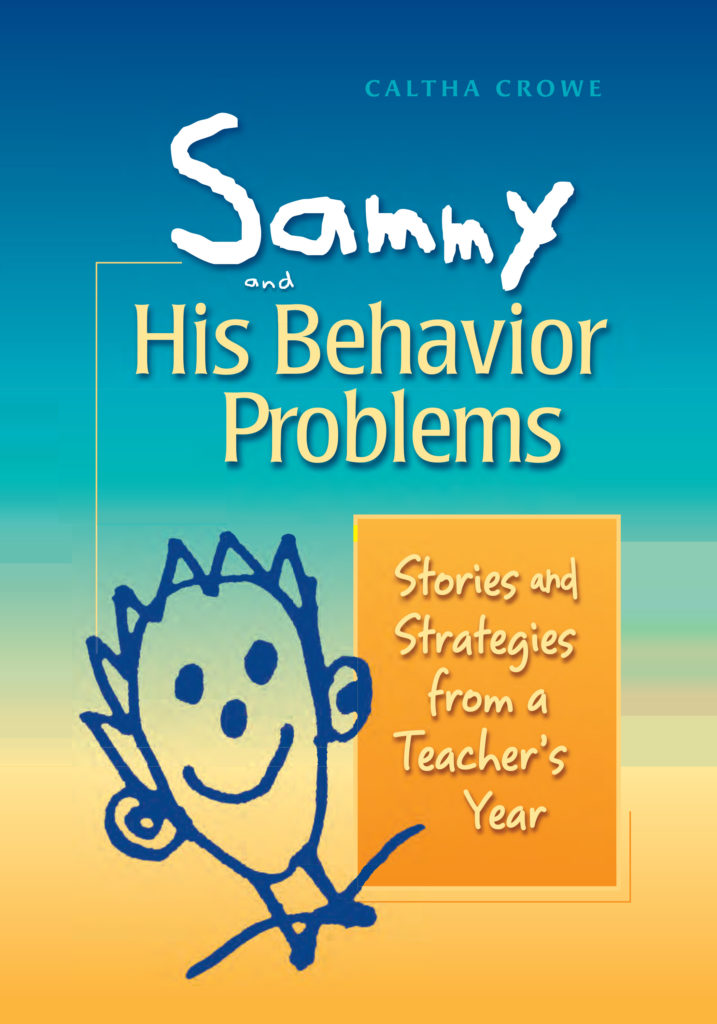
A few years ago, I had a student who broke me. During our very first Morning Meeting, as my brand new class met each other, he slapped another first grader. Hard. As the year progressed, his behavior challenges continued. He pushed over desks, punched children on the playground, and drew threatening pictures of me. I cried almost every day after school and doubted my abilities as a teacher, even though I’d been teaching since 1992. I even considered leaving teaching at year’s end. However, I had already signed up to take Responsive Classroom II that summer, and I went, hoping the experience would rejuvenate me. The support and validation I received that week buoyed me, and I decided to move forward and put the year behind me. However, I still didn’t feel fully healed.
Then I happened to pick up the book Sammy and His Behavior Problems: Stories and Strategies from a Teacher’s Year. Reading Caltha Crowe’s moving and honest account of her year with a student who challenged her teaching expertise daily was what finally restored me. It was a relief to learn how someone who had taught elementary children for nearly forty years, presented countless Responsive Classroom workshops, and mentored new teachers for twenty years had also struggled with a student’s extreme behavioral challenges.
As I read Caltha’s detailed descriptions of Sammy’s behavior and her responses and reflections, I relived my year with my own very challenging “Sammy”—and I began to heal. By the time I’d finished the book, I was ready to use my experience as a source for reflection about what I could do better to help children in crisis, rather than continuing to dwell on what had gone wrong.
If you’ve also had a “Sammy” in your class—and even if you haven’t yet—you’ll want to read this book. Reading it is like watching an excellent professional development video because Ms. Crowe’s captivating narrative style brings us into her classroom. Plus, the entries from her teaching journal let us listen in on the thinking of a master teacher as she grapples with a student’s upsetting and sometimes volatile behaviors. (Read an excerpt: “Scenes from Sammy and His Behavior Problems“)
As we observe Ms. Crowe figuring out what’s motivating Sammy’s behaviors, planning how to respond, and connecting with him on a deeper level instead of just addressing his disruptive behaviors, we imagine how we, too, can use those strategies to help a child. For example, during an early problem-solving conference with Sammy, Ms. Crowe builds trust by displaying empathy and appreciating his unique brand of humor. It’s a simple yet powerful move, and seeing Ms. Crowe use it inspires readers to do the same with our own struggling students.
Finally, Ms. Crowe’s book illustrates a crucial strategy that teachers must use if we hope to truly help students who struggle: finding something in them to like or connect with. This is necessary for each of our students, but especially for the ones who challenge us. As I read Ms. Crowe’s stories of her year with Sammy, I watched her grow to appreciate so much about him—his love for history, his sense of humor, his creative abilities, his deep desire for friends—and I grew to like him, too. And when I read about his reaction to the chaos of a field trip—a tantrum that disconnects him from his classmates—I understood his fear and need for reassurance. Connecting with Sammy’s vulnerability inspired me to empathize with my own struggling students.
Sammy and His Behavior Problems: Stories and Strategies from a Teacher’s Year will help you deepen your professional practice and find comfort as you deal with challenging classroom situations. You may even want to invite a colleague or two to read it with you. This is a great book to read with a group! If you do read it, I’d love to hear what you think!
Candace Roberts is a Responsive Classroom consultant, kindergarten teacher in Rhode Island, and Early Childhood Generalist.